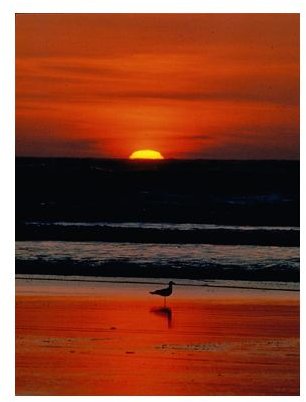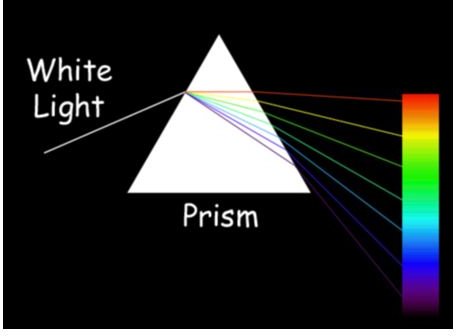Why is the Sun Red During a Sunset
Refraction
For centuries, man has known that the visible light or so-called “white light” we receive from the Sun is actually a composite, i.e. it can be broken down into a collection of component parts by a prism. Prisms bend light components differently, according to frequency. Different colors of light have different frequencies, so white light is bent into a band of component colors. This bending is called “refraction.” According to the familiar acronym—ROY G. BIV, which tells us that white light breaks down into the colors red, orange, yellow, green, blue, indigo, and violet, consecutively.
Index of Refraction
The measure of refraction a transparent material (whether a prism or not) produces depends upon the speed of light passing through it in comparison with the speed of the same light in a vacuum. By definition, the index of refraction for a vacuum, such as space, is 1.0000. The index of Earth’s atmosphere has an index of approximately 1.0003 (in contrast to, for example, glass, which bends light more sharply and has an index of approximately 1.46).
Not a Prism, Just Prismatic
Actually, to produce a separation of light does not require a prism. It suffices to have an interfacing of two materials with differing indexes. The greater the incident angle of the light leaving one medium and entering the other, the greater the bending or refraction. If light passes perpendicularly through an interface, no bending is experienced. Light thus entering directly from the Sun into our eyes in broad daylight is not bent at all, and we see the Sun exactly as it looks normally. The same is not true of the light at sunset.
Refractive Component of a Red Sunset
The atmosphere of our Earth acts like a prism. Late in the day—at the time of sunset or just thereafter—the Sun dips very slightly below the horizon. We don’t see the light emitted from the Sun at that time coming in as straight lines, since those now go over our heads. In addition, we see less of the light that is bent a lot—namely violet, indigo, blue, or green. What we do see more of is the portion that is bent just a little—at the reddish end—the “ROY” end—of the spectrum. But there is another element adding to the reddish tinge of the Sun some nights. That element is scattering.
The Scattering Component
Particles scatter light of various wavelengths, dependent upon their size. Gas molecules and industrial pollutants tend to scatter the higher frequencies of visible light, i.e., those at the higher end of the spectrum, the green, blue, indigo and violet end. As the Sun approaches the horizon, its light now travels through a denser part of the atmosphere, which enhances the scattering effect. This intensifies the ruddy perception of the Sun toward the end of the day.

References and Resources
Georgia State University – Refraction of Light
San Diego State University - Refraction
University of Illinois - Sunsets
University of Illinois – Scattering of Light
